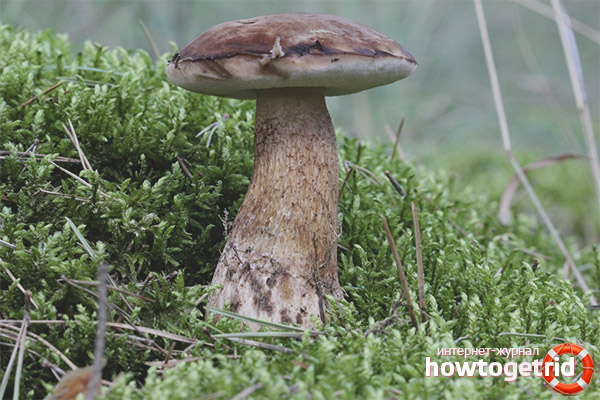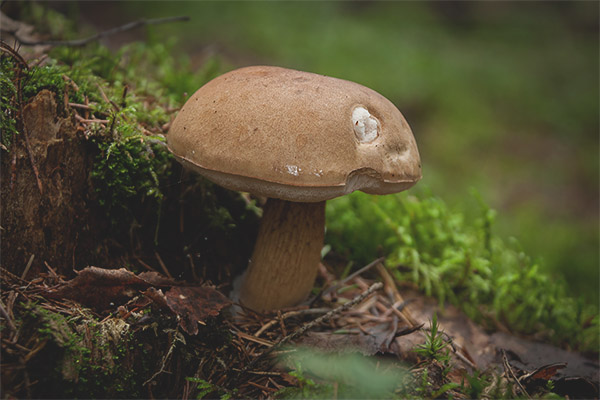The content of the article
In the summer-autumn season, when mushroom pickers with a bast basket in their hands walk through the forest and look for mushrooms, hoping to harvest a rich harvest, you can come across so-called twins, easily confusing inexperienced lovers of “quiet hunting”. Twins are false mushrooms that look very similar to real ones. They have their own characteristics by which such a mushroom can be easily distinguished. Knowing these signs, with due care, will easily save himself and his family from trouble, poisoning and frustration. It's about the gall mushroom.
The gall mushroom (popularly known as gorchak) is a false white mushroom, at first glance very similar to its edible namesake. They are often confused, but may also be confused with ordinary boletus and boletus - a bitter can take on the appearance of these mushrooms.
Gorchak was nicknamed because of bitterness, which does not disappear under any treatment - this mushroom can be stewed, fried, boiled, anyway it will be unbearably bitter and nasty in taste.
Description and appearance
The size of the cap of this inedible mushroom is from 4 to 15-16 centimeters - depending on age. Young mushrooms that have just grown out of the ground have a spherical (hemispherical shape) hat, in older ones it is rounder and looks like a ball. Color varies from light brown to yellow-brown, with predominant light shades, like boletus. The porous spongy layer under the cap of the newly appeared mushrooms of light white color, in older ones a pink tint appears.
The pulp of the mushroom is fibrous and has either no smell at all or gives off a light mushroom smell. The leg of this mushroom has a cylindrical shape, the base is somewhat swollen. Height also depends on age - only from 3 centimeters in a newborn mushroom, and up to 14 centimeters in an adult mature mushroom. While the fungus matures, the leg is gradually covered with a frequent net, which consists of small fibers of brown or grayish color. The shape of the pores of the bitter is roundish, occasionally somewhat angular.
- The main feature that distinguishes the gall mushroom from the real white and edible brownberry is a bitter taste. To feel it, you do not need to taste the mushroom found - just lick it and all will become clear. Neither the real white nor the brown collar has any bitterness. In addition, the tongue will feel a slight burning sensation caused by substances contained in the fungus.
- In the cut gall mushroom, the flesh immediately darkens, acquiring a pink-brownish color. In a true white fungus, as well as in a brownberry, this does not happen - the flesh remains the same white color. Only in a roaring brow, the color range of pulp undergoes changes - it becomes pinkish.
- Another difference of the gall fungus: the leg is decorated with a pattern similar to a brown grid. In this white such a picture is not available. And on the stem of a brownberry there are scales of white and black colors, arranged so that it resembles a birch trunk. The only thing is that the bronze and mesh boronik has a similar reticulum, only it is less dense and has a different appearance.
- The tubular layer of the gall fungus is white (on the young) or, for the most part, pink and dirty pink (on the adults). In this edible white fungus, the tubular substance is white, either slightly yellowish or gray. These brownberries have a whitish-gray tubular layer; in old mature mushrooms it is brown in color.
What places does gall mushroom like to grow in?

Gorchak grows in Russian, American and European forests of any type - both coniferous and deciduous. Forms a kind of mycorrhiza with deciduous (oak, aspen, birch) and coniferous trees. The first bilious mushrooms appear in June and stand in the forests until the first October frosts. Grow under a tree, forming a symbiosis with the root system, occur on rotted stumps, often in groups of 5 to 15 pieces, less often alone.
Poisoning
The gall (false white) mushroom is considered inedible, but not poisonous. In the pulp are bitter substances, because of which the plant was named. When the fungus begins to fry, boil or heat treat in any way, the bitterness becomes many times stronger, and it is simply impossible to eat a lot in one meal.This is the reason why there are so few cases of poisoning with this product and they are so rare.
For the most part, poisoning occurs when the mushroom picker takes a bitter mushroom, mixed up with a boletus or brownberry, and puts it in a common pile. When preserved, vinegar with various spices slightly mask bitterness, but it is present in all mushrooms, and it is simply impossible to eat them.
Symptoms that indicate poisoning
- Immediately begins to hurt and feel dizzy, the body is experiencing slight weakness, nausea and vomiting appear, painful sensations occur in the abdomen, diarrhea can begin, but it goes away in 1-2 days.
- After a couple of weeks, toxic substances in the fungus begin to affect the liver and disrupt bile secretion. If a large amount of bitter is eaten, then there is the likelihood of developing cirrhosis of the liver.
The gall fungus is so bitter that even the parasites living in other mushrooms avoid it.
Video: gall mushroom (gorchak, false white)











To send